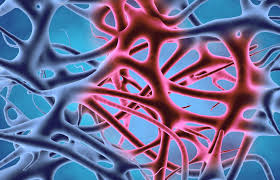As winter draws near and daylight dwindles, many individuals feel a shift in their mood, experiencing a sense of gloom and fatigue. This phenomenon, known as Seasonal Affective Disorder (SAD), affects millions of people worldwide, bringing feelings of anxiety, dread, and depression during the colder months.
“It’s a feeling of panic, fear, anxiety, and dread all in one,” said Germaine Pataki, a 63-year-old from Saskatoon, Saskatchewan, who has battled SAD for years. Pataki finds solace through yoga, walking, medication, and a supportive Facebook group dedicated to others with SAD. “I try to focus on helping others through it. This gives me purpose,” she shared.
Understanding Seasonal Affective Disorder
Seasonal Affective Disorder is a form of recurrent depression that typically appears in late fall and lifts by spring. A milder form, known as subsyndromal SAD, also exists, along with a lesser-understood summer variety. SAD was first described in 1984 by Dr. Norman Rosenthal, then a researcher at the National Institutes of Health. He observed that the acronym SAD, which stands for Seasonal Affective Disorder, is easy to remember, helping to raise awareness about the condition.
Research suggests that SAD may be tied to how the brain processes light, particularly blue light. During winter, reduced exposure to natural sunlight impacts specialized cells in our eyes, altering neural signals that influence mood and alertness. Kathryn Roecklein, a researcher at the University of Pittsburgh, found that individuals with SAD tend to be less sensitive to blue light, especially in winter. “When light levels drop, this reduced sensitivity might be too low for healthy functioning, leading to depression,” Roecklein explained.
Coping Strategies for SAD
With winter on the horizon, people with SAD are taking proactive measures to manage their symptoms. Miriam Cherry, a 50-year-old from Larchmont, New York, spent her summer planning for winter. “It’s like clockwork,” she said. “The sunlight is low. The day ends at 4:45, and suddenly my mood is horrible.”
Light Therapy: A First-Line Treatment
For many, light therapy proves to be an effective treatment. Dr. Paul Desan of Yale University’s Winter Depression Research Clinic advocates light therapy as an initial intervention for SAD. “When we get patients on exposure to bright light for a half an hour or so every morning, the majority of patients get dramatically better,” Desan said.
Light therapy devices produce brightness levels about 20 times higher than standard indoor lighting, with experts recommending lights around 10,000 lux. The therapy involves sitting near the light for 30 minutes each morning to restore mood and energy. Prices for light boxes range from $70 to $400, but Desan advises caution as some products may not emit sufficient brightness to be effective.
Other Therapies: Talk Therapy and Medication
Doctors often combine light therapy with antidepressant medications to achieve optimal results. Keeping a regular sleep schedule and spending time outdoors, even on cloudy days, are also recommended. Cognitive Behavioral Therapy (CBT), a type of talk therapy, has shown to be especially beneficial for SAD. According to University of Vermont researcher Kelly Rohan, CBT offers more lasting effects than light therapy alone. In CBT, individuals learn to reframe negative thoughts and identify small activities that bring enjoyment, counteracting winter’s isolating effect. “Working with a therapist can help people take small steps toward having fun again,” Rohan said, suggesting activities like meeting a friend for coffee as a way to break out of winter hibernation mode.
Unique Coping Tactics and Emerging Therapies
Over time, many people with SAD have developed personal strategies to manage their symptoms. Elizabeth Wescott, 69, from Folsom, California, alternates between hot and cold water during her showers, a technique known as contrast showers. She also uses a light box and antidepressant medication. “I’m always looking for new tools,” she said.
Cherry, from New York, is experimenting with horticulture, planting winter-blooming flowers like snowdrops and hellebores to remind herself that spring is coming. “That’s going to be a sign to me that this isn’t going to last forever,” she said. “It will get better, and spring is on its way.”
Seeking Help for SAD
As winter approaches, experts encourage anyone experiencing seasonal depression to seek support. Effective treatments are available, ranging from light therapy and medication to psychotherapy. For those struggling with less severe symptoms, staying active, creating a consistent sleep schedule, and spending time outdoors can also improve well-being. Recognizing the cyclical nature of SAD and finding coping strategies that work can help individuals manage seasonal depression and look forward to brighter days ahead.











